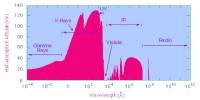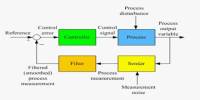A lightweight, ultra-shock-absorbing foam created by engineers at the University of Wisconsin-Madison could significantly enhance helmets intended to shield wearers from powerful hits.
The new material has a specific energy absorption that is 18 times higher than the foam currently used in combat helmet liners for the U.S. military, as well as being more stronger and stiffer, which may enable it to offer better impact protection.
A concussion can be brought on by the physical trauma that an impact can cause to the brain. Concussions and other traumatic brain injuries may be lessened or even avoided with the use of helmet materials that are better at absorbing and dissipating this kinetic energy.
The new material is being tested in a helmet liner prototype by Team Wendy, a company that makes helmets and is the researchers’ industry partner, to see how it performs in practical situations.
“This new material holds tremendous potential for energy absorption and thus impact mitigation, which in turn should significantly lower the likelihood of brain injury,” says Ramathasan Thevamaran, a UW-Madison professor of engineering physics who led the research.
In a paper that was just recently published in the journal Extreme Mechanics Letters, the team described its advancement.
The new material is an architected, vertically aligned carbon nanotube foam. The basic building blocks used by the researchers to produce it were carbon nanotubes, which are carbon cylinders that are only one atom thick in each layer.
I expected the overall properties to improve due to our interactive architecture, but I was surprised by how dramatically the properties were enhanced when the cylinders were 10 micrometers thick. It was due to an unusual size effect that emerged in the process-structure-property relations. The effect was very pronounced, and it turned out to be quite advantageous for the properties we were targeting.
Ramathasan Thevamaran
Since carbon nanotubes already possess outstanding mechanical capabilities, the researchers created a material with distinctive structural features at various length scales in order to improve its performance. A large number of micrometer-scale cylinder structures consisting of many carbon nanotubes make up the material’s innovative architecture.
It was a difficult process to determine the new foam’s ultimate optimal design criteria, such as the cylinders’ inner diameter, thickness, and space between neighboring ones. The experimentation was done methodically by the researchers, who adjusted each parameter and looked at every potential combination.
“So we took a few different thicknesses, and then tested that with every diameter size and every possible gap, and so on,” Thevamaran says. “Altogether, we looked at 60 different combinations and conducted three tests on each sample, so 180 experiments went into this study.”
They uncovered a clear winner. Cylinders with a thickness of 10 micrometers or less, arranged close to each other, produced a foam with the best shock-absorbing properties.
“I expected the overall properties to improve due to our interactive architecture, but I was surprised by how dramatically the properties were enhanced when the cylinders were 10 micrometers thick,” Thevamaran says. “It was due to an unusual size effect that emerged in the process-structure-property relations. The effect was very pronounced, and it turned out to be quite advantageous for the properties we were targeting.”
The novel material’s carbon nanotube building blocks also allow it to maintain substantial shock absorption at both extremely high and very low temperatures, making it useful for applications in a variety of harsh situations.
The researchers, including Komal Chawla, UW-Madison postdoctoral research associate, and graduate students Abhishek Gupta and Abhijeet S. Bhardwaj, are patenting their innovation through the Wisconsin Alumni Research Foundation.
The UW-Madison-led PANTHER program is an interdisciplinary research endeavor that is creating solutions to enable better identification and prevention of traumatic brain injuries. The university-industry partnership was a part of this program.
















